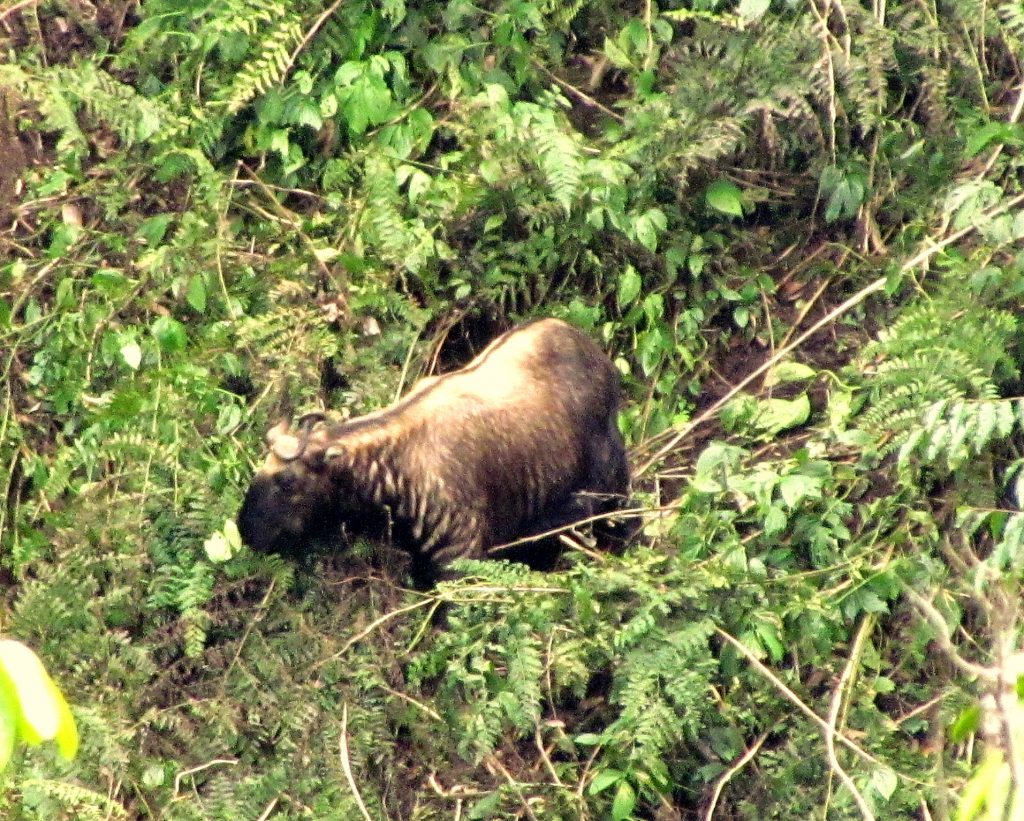
One of the most elusive mammals on Earth, the Bhutan takin, was unexpectedly snapped in a camera trap photo in Northeast India.
The footage was collected over 10,000 feet above sea level in the state of Arunachal Pradesh. It is, remarkably, the first ever sighting of a takin in the East Kameng forest. The cameras had been set by the forest department to survey snow leopard populations in higher altitudes, and this was just a lucky find.
These weird and wonderful animals live a mysterious existence, and most wildlife enthusiasts have never even heard of them. Takins are even considered by some to be mythical creatures, mainly because they’re rarely seen; The animals dwell only in dense forest in remote regions of the Himalayas.
Camera trap images of Bhutanese Takin from Seppa FD. It is first instance of camera trap image capture of this animal in East Kameng.
The cameras were installed in high altitude areas under snow leopard population assessment survey by the Department.@NatungMama @PemaKhanduBJP pic.twitter.com/iyce5shUuS— Department of Envt. & Forests, Arunachal Pradesh (@ArunForests) December 18, 2021
Highly unusual in appearance, the takin looks something like a cross between a large antelope and a sheep, with a touch of muskox. Author and takin aficionado Michael Buckley described it well, as “a hairy, hoofed herbivore with hunched shoulders, a short, thick neck and a large, broad face with small ears, a bulbous nose and backward-facing horns.”
These guys are the stuff of folklore, too. Legend has it that in the 16th century, a Bhutanese tantric master was asked to perform a miracle at the end of a feast; He took a heap of cow and goat bones and created an entirely new animal: the takin.
The Bhutan takin is actually one of four subspecies of takins found in Asia. Takins are also called “gnu goats” and are large plant-eating ungulates found in high altitudes between 3,000 and 15,000 feet above sea level. While they might not look graceful, these guys can easily bound up steep slopes, and are well-suited for extreme environments.

These secretive creatures are listed as Vulnerable by IUCN as a result of habitat loss and hunting. And, unfortunately, their horns have been uncovered multiple times in the illegal wildlife trade in Asia.




